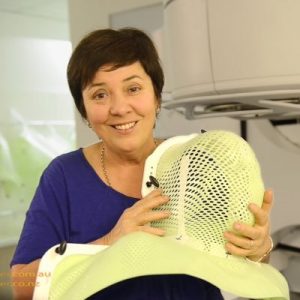Most patients with human papillomavirus (HPV) related oropharyngeal squamous cell carcinoma (HPV +ve OPSCC) will present with a neck lump. These cancers arise in lymphoid/tonsillar tissue and have few if any other symptoms. Patients with this cancer do not look like traditional head and neck cancer patients. They tend to be younger, with many aged in their thirties and forties, and the classic squamous cell carcinoma risk factors of heavy tobacco and alcohol use are often absent.
Why does HPV status matter?
The HPV status of OPSCC is of vital importance because HPV +ve OPSCC displays epidemiologic and biological behaviour distinct from that of HPV -ve OPSCC. These differences in behaviour affect every aspect of the disease such as:
- initial symptoms noticed by the patient
- tumour location and size
- the likelihood and timing of lymph node spread
- response to therapy
- prognosis
These tumours behave so differently to HPV -ve OPSCC tumours, that in 2017 a new cancer staging system was introduced by the American Joint Committee on Cancer (Lydiatt et al. 2017). The good news is that five year survival rate currently approaches 80% or greater (Moore et al. 2018).
Risk Factors
Strong risk factors for HPV +ve disease include a history of multiple vaginal or oral sexual partners and marijuana use (Moore & Mehta 2015). Perhaps the most important risk factor is oral sexual behaviour, particularly men and women who have oral sex with women. It is important to emphasise that these patients may have no history of smoking and are often under fifty years of age. There may also be years and sometimes decades between contraction of HPV and the development of HPV +ve OPSCC. General Practitioners (GPs) need to consider this when taking a patient history. Many patients who present with the disease have been either monogamous or not sexually active for years prior to development of clinical signs and symptoms.
Symptoms
The most common initial symptom is a neck mass. Other symptoms may include or be limited to one of the following;
- dysphagia (difficulty swallowing)
- odynophagia (painful swallowing)
- unexplained otalgia (earache)
- a globus sensation (often described as “a lump in the throat”)
- haemoptysis (coughing up blood)
- a visualised mass by the patient
While many of these symptoms are characteristic of more common benign disease processes, persistent symptoms or lack of response to standard treatment warrant immediate further investigation. Patients may simply say they “have a bit of a sore throat”, “a feeling of things sticking in the throat”, or “a mild earache that will not go away”. One patient described her pain as, “I felt I had a pencil jammed into my left ear.” Another of my patient’s had a lump detected by a beautician during a regular facial. In other words, this is a sinister disease because it produces clinical signs and symptoms which mimic many benign disease processes.
Evaluation and Diagnosis

Spiros Kotsialos was diagnosed with HPV related oropharyngeal cancer when aged in his thirties. He had no history of smoking and saw five different doctors before receiving a correct diagnosis.

Julie McCrossin was diagnosed with Stage IV HPV related oropharyngeal cancer after spending months seeking treatment for persistent earache.
Evaluation of these patients should begin with a targeted history asking about the common symptoms listed above. Many patients tend to play down their symptoms so it is important to ask them questions in plain language. It is also important to develop a simple routine for physical examination;
- Careful palpation of the neck is performed with special attention to the deep cervical chain of lymph nodes under the sternomastoid muscle;
- Examination of the mouth should not only focus on the buccal mucosa, gums and anterior tongue but also on the tonsillar fossae, palate and back of the tongue;
- Palpation of the tongue base should be attempted if you are suspicious because it is not easy to see the back of the tongue or tongue base without specialised equipment.
Unlike cervical cancer there are no standard tests, such as the Papanicolaou test and HPV DNA testing, currently available to evaluate for precancerous OPSCC lesions. Consequently a good targeted history and a simple repeatable physical examination of the mouth and neck are the best ways to pick up these cancers, especially at an early stage.
Suspicious lesions found during the physical examination require timely diagnostic workup. As mentioned above, the most common presentation for patients with HPV +ve OPSCC is a unilateral neck mass representing metastatic SCC from the primary tumour. The best initial imaging modality is a CT scan neck with contrast. This will provide the most information about any neck lump and may demonstrate the primary tumour. A fine-needle aspiration biopsy (FNAB) can then be performed under ultrasound control. The biopsy material will normally demonstrate the presence of malignant cells and most labs will routinely stain for p16 which acts as a surrogate marker for HPV positive tumours. The patient should then be referred to an Otolaryngology – Head and Neck surgeon.
Role of General Practitioners
My patients and I rely heavily on GPs. Early diagnosis can have a huge impact on treatment and subsequent quality of life for patients with this disease. Awareness of HPV +ve OPSCC and early referral for management are critical to increasing the rate of successful treatment and reducing morbidity.
Patient nutrition before, during and after treatment is extremely important and can have a major impact upon how patients respond to treatment and their long-term survival. Head and neck cancer patients are at an increased risk for weight loss due to dysphagia or odynophagia, as well as to treatment related complications. Some patients may benefit from referral to a dietitian. Smoking cessation is also critical before, during and after treatment. Good coordination of care between the primary carer, head and neck surgical oncologist, speech/language pathologist and dentist, can go a long way to improving a patient’s quality of life.
I want to thank General Practitioner Dr Craig Rodgers of East Sydney Doctors, and patient advocates Julie McCrossin and Spiros Kotsialos for their assistance with this article.
References
Lydiatt, W.M., Patel, S.G., O’Sullivan, B., Brandwein, M.S., Ridge, J.A., Migliacci, J.C., Loomis, A.M. & Shah, J.P. 2017, ‘Head and Neck cancers—major changes in the American Joint Committee on cancer eighth edition cancer staging manual’, CA: A Cancer Journal for Clinicians, vol. 67, no. 2, pp. 122-37.
Moore, K.A. & Mehta, V. 2015, ‘The Growing Epidemic of HPV-Positive Oropharyngeal Carcinoma: A Clinical Review for Primary Care Providers’, The Journal of the American Board of Family Medicine, vol. 28, no. 4, pp. 498-503.
Moore, E.J., Van Abel, K.M., Price, D.L., Lohse, C.M., Olsen, K.D., Jackson, R.S. & Martin, E.J. 2018, ‘Transoral robotic surgery for oropharyngeal carcinoma: Surgical margins and oncologic outcomes’, Head Neck, vol. 40, no. 4, pp. 747-55.
